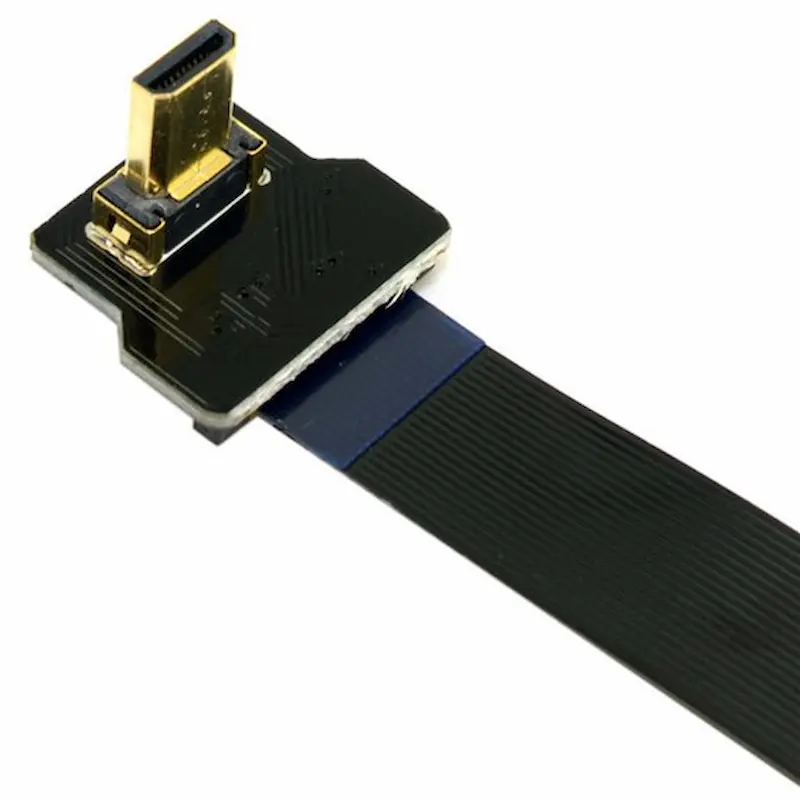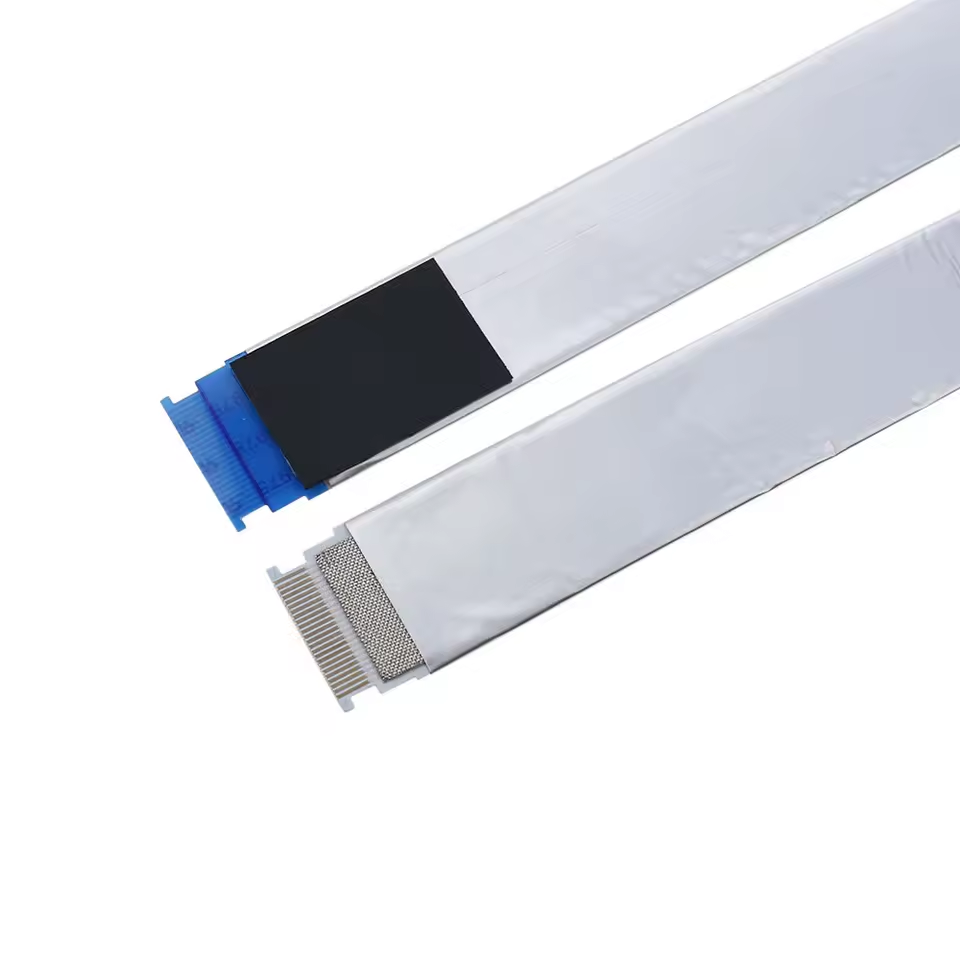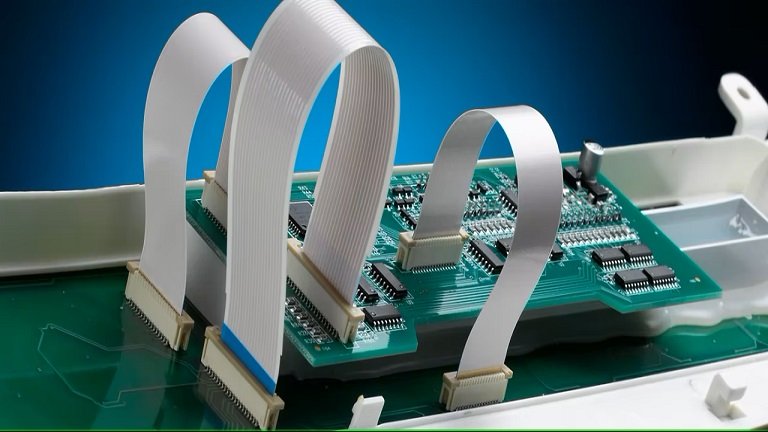
Choosing the right high flexible cable stands as the key to reliable automation. You need a cable that handles constant motion without breaking down. Industry studies show that durable cables with quality materials, like copper, boost system productivity and cut costs. Flexible designs let your automation equipment move freely and last longer. When you understand these differences, you make faster decisions and keep your systems running smoothly.
Key Takeaways
- Choose high flexible cables designed for continuous motion to avoid early failures and downtime. Look for cables tested for millions of flex cycles.
- Identify the type of movement in your automation system. Use continuous flex cables for linear motion and torsion cables for twisting applications.
- Select the right cable jacket material based on environmental conditions. Use PUR for abrasion resistance and PVC for moisture protection.
- Regularly inspect and maintain cables to catch wear and prevent failures. Schedule monthly checks in high-motion systems to ensure reliability.
- Plan your cable installation carefully. Avoid sharp bends and high-stress areas to extend cable life and improve system performance.
High Flexible Cable Motion Needs

Understanding motion requirements is your first step when choosing a high flexible cable for automation. The way your equipment moves determines which cable will last and perform best. If you match the cable to the motion, you avoid early failures and downtime.
Continuous Flex
Continuous flexing happens when a cable rolls back and forth in a straight line. You see this in cable tracks and drag chains. These environments demand cables that can handle constant motion without wearing out.
Tip: Continuous-flex cables are tested for millions of cycles. They work well in automation systems like robotics and automated machinery. You should look for cables designed to handle tight bends and repeated stress.
- Common uses for continuous flex cables:
- Robotics
- Automated machinery
- Industrial equipment
- Manufacturing
- Automotive
- Aerospace
Continuous-flex cables offer high durability. They can last for one to three million cycles, while standard cables may only last for 50,000 cycles. The right cable keeps your automation running smoothly.
Torsion
Torsional flex means the cable twists along its length. You find this in robotic arms and rotating equipment. Torsion puts different stress on the cable compared to linear flexing.
Note: If your automation involves twisting, you need cables built for torsion. These cables use special materials and construction to prevent damage from repeated twisting.
- Torsional flex cables are essential for:
- Robotic joints
- Rotating sensors
- Automated assembly lines
Choosing the right cable for torsion protects your automation from unexpected breakdowns.
Stationary vs. Dynamic
You must decide if your application is stationary or dynamic. Stationary cables stay in place and rarely move. Dynamic cables move often and face more stress.
- Determine if your automation is stationary or moving.
- Identify the type of movement: flexing, torsion, or both.
- Specify the bend radius based on wire gauge and conductor type.
Matching the cable to your motion needs ensures long-term reliability and reduces maintenance. Flexibility in cable design helps your automation adapt to changing demands.
Flexible Industrial Cables Types
Flexible industrial cables play a vital role in automation. You need to understand the differences between cable types to make the right choice for your system. Each type offers unique features that suit specific automation tasks.
Cable Construction
The way a cable is built affects how it performs under stress. Manufacturers use different materials and techniques to boost flexibility and durability. You often see stainless steel and high-carbon steel used for their strength and resistance to corrosion. Polymer coatings add insulation and protect against wear. Stranded cores, made by twisting small wires together, allow the cable to bend easily without breaking. Braided and layered constructions increase endurance, especially when the cable faces repeated motion.
| Material/Technique | Description |
|---|---|
| Stainless Steel | Durable, resists corrosion, handles tension and moisture well |
| High-Carbon Steel | Excellent tensile strength, withstands high loads |
| Polymer Coatings | Adds flexibility, protects from wear and tear |
| Stranded Core | Twisted small wires, improves flexibility and maintains strength |
| Braided Construction | Woven wires, increases flexibility and endurance |
| Layered Construction | Multiple layers, prioritizes strength for heavy-duty use |
Strand Count & Jacket Materials
Strand count is a key factor in how flexible industrial cables perform. More strands mean greater flexibility and resistance to damage. High strand count alloy conductors work best for applications with many flex cycles. Solid core conductors bend less and wear out faster.
| Cable Type | Strand Count | Flex Life (Cycles) |
|---|---|---|
| Normal Stranded Ethernet | 7 | 50,000 |
| High Flex Cable | 19 | 1,000,000 – 10,000,000 |
Jacket materials also matter. Neoprene resists sunlight and water, making it ideal for rugged environments. EPR handles heat and corrosion, while PVC offers moisture resistance and high strength. PUR jackets provide flexibility and abrasion resistance, perfect for industrial robotics. CPE jackets resist chemicals and UV, keeping cables safe in tough conditions.
Tip: Choose a jacket material that matches your environment. For example, use PUR for automation with frequent movement or EPR for marine settings.
Shielding Options
Shielding protects flexible industrial cables from electromagnetic interference. You can select from braid, spiral, or foil shields. Braid shields offer good flexibility and coverage for low to mid frequencies. Spiral shields provide even better flexibility and suit low-frequency applications. Foil shields give complete coverage and work best for high-frequency signals.
| Shield Type | Flexibility | Coverage | Frequency Range | Advantages |
|---|---|---|---|---|
| Braid | Good | 90% | Up to 100 MHz | Maintains flexibility and structural integrity |
| Spiral | Very Good | 90-95% | Up to 1 MHz | Most flexible, easy to manufacture |
| Foil | Poor | 100% | >100 MHz | Best for high frequencies, full coverage |
You should match the shielding type to your automation needs. This helps maintain signal quality and prevents interference.
Cable Selection Criteria
Selecting the right high flexible cable for automation means looking at several important factors. You want your system to run smoothly, avoid downtime, and last as long as possible. Each application has unique needs, so you must match cable features to your environment and installation.
Flex Cycles & Durability
Flex cycles measure how many times a cable can bend or move before it fails. In automation, cables often move millions of times. If you choose a cable with a low flex cycle rating, you risk early failure and costly repairs. Flexible industrial cables designed for high-motion environments last much longer than standard cables.
| Cable Type | Flex Life (Cycles) | Weight Comparison | Advantages |
|---|---|---|---|
| Ribbon Cable | 100 times longer | 1/4 the weight | Reduces mass, allows greater acceleration, less vibration, and decreased wear |
| Standard Power Cable | Standard | Standard | Traditional design not optimized for high-motion applications |
You should always check the flex life rating before making a choice. For robotics or automated machinery, pick cables tested for millions of cycles. This ensures your automation system stays reliable and reduces maintenance. The inherent flexibility of some flat cables even allows you to use smaller motors, saving space and energy. This flexibility also helps prevent failures, which cause over half of reliability issues in automation equipment.
Tip: Match the cable’s flex cycle rating to your application’s motion demands. High flex life means greater durability and fewer breakdowns.
Environmental Hazards
Automation systems often operate in harsh environments. Flexible industrial cables face threats like chemicals, extreme temperatures, and constant mechanical stress. If you ignore these hazards, you risk cable damage and system failure.
Common environmental hazards include:
- Exposure to harsh chemicals
- Extreme heat or cold
- Mechanical stress from frequent flexing
You can reduce these risks by choosing cables with the right material properties. For example, polyurethane (PUR) jackets resist abrasion and microbes, making them ideal for dynamic applications. PVC jackets offer strong insulation and mechanical firmness. Always check if the cable resists oil, UV, or flames, especially for outdoor or industrial use.
Note: Industry standards require cables to withstand specific hazards. For example, food manufacturing needs cables that survive high-pressure washdowns. Automation in robotics demands cables that endure electromagnetic interference and millions of flex cycles.
Certifications also matter. Look for:
- UL Certification for safety in the U.S.
- CPR and CE for fire safety in the EU
- REACH/RoHS for reduced hazardous substances
- ISO for international quality and safety
These certifications ensure your cable meets strict safety and reliability standards.
Installation & Size
Proper installation and the right cable size play a big role in performance and longevity. Poor installation can lead to sharp bends, high stress, or exposure to heat and electromagnetic interference. You should plan cable routes carefully, avoiding tight corners and keeping cables away from heat sources.
Key installation tips:
- Avoid sharp bends and high-stress areas
- Use rollers to reduce friction during installation
- Do not pull cables with excessive force
- Choose UV-resistant cables for outdoor use
- Select flame-retardant cables for indoor environments
The size of the cable matters too. Smaller, lighter cables reduce mass and allow for faster acceleration in moving parts. This can decrease vibration and wear, improving overall system strength and durability. Always check the wire gauge, insulation type, voltage rating, and current-carrying capacity to match your automation needs.
Callout: Plan for future needs. If you expect your automation system to grow, select cables with extra capacity.
Cost is another factor. Advanced cables with special materials or designs may cost more, but they offer better performance and longer life. Investing in quality now can save you from expensive repairs later.
Automation Application Matching

Practical Scenarios
You face many choices when matching flexible industrial cables to automation tasks. Each application has unique demands. For example, indoor automation systems often require cables with strong insulation and flame-retardant jackets. Outdoor setups need cables that resist moisture, UV rays, and chemicals. If you work in hazardous areas, you must select cables with special coatings and certifications.
- Environmental conditions shape your decision. Moisture or chemical exposure can shorten cable life. You should choose cables designed for these threats.
- Mechanical properties matter. Automation systems with moving parts need cables with high flexibility and abrasion resistance. If your setup involves frequent bending or pulling, select cables with a high strand count and strong tensile strength.
- In robotics, continuous flex cables keep arms moving smoothly. In conveyor systems, abrasion-resistant cables prevent wear from constant contact.
Tip: Always match the cable’s features to the specific automation environment. This prevents early failures and keeps your system reliable.
Common Mistakes
Many users make errors during cable selection and installation. These mistakes can lead to downtime and costly repairs.
- Ignoring labeling makes troubleshooting difficult.
- Using the wrong tools can damage cables.
- Overtightening causes premature wear.
- Neglecting cable length creates clutter or stress.
- Overloading power strips risks fire hazards.
- Failing to plan the setup leads to chaos.
- Forgetting about airflow shortens device lifespan.
- Running cables across high-traffic areas increases damage risk.
- Ignoring compatibility causes performance issues.
- Not planning for future upgrades forces expensive changes.
- Routing power and data cables together creates interference.
- Skipping routine maintenance allows deterioration.
You may confuse high flex cables with standard flexible industrial cables. Using the wrong type in dynamic automation environments often results in early breakdowns and higher costs. Always check the cable specifications and plan your installation carefully. Routine maintenance helps you catch problems before they affect your automation system.
Reliability & Maintenance
Pre-Installation Checks
You can boost the reliability of your automation system by following smart pre-installation checks for every cable. Start by assessing movement requirements. Identify the bend radius, flex cycles, and torsion needs for your setup. These details help you choose the right cable for your automation environment.
- Assess movement requirements for each cable in your system.
- Consult with cable suppliers to match your specifications.
- Plan for proper installation using cable chains or conduits to control motion and reduce stress.
- Allow cables to hang and relax before installation. This step prevents internal stress and future damage.
- Adopt predictive maintenance practices. Inspect cables regularly for signs of wear, abrasion, or mechanical damage.
Tip: Early assessment and careful planning help you avoid costly downtime and keep your automation running smoothly.
Long-Term Monitoring
Long-term monitoring plays a key role in maintaining cable reliability. You can spot problems before they cause failures by using proactive maintenance strategies. Make sure your cables operate within their designed parameters. This step is vital for the reliability of your automation system.
- Use predictive maintenance tools like thermal imaging and signal monitoring. These technologies give early warnings of cable degradation.
- Monitor cables for changes in temperature, signal quality, or physical wear.
- Schedule regular inspections to catch issues early.
Note: Proactive monitoring helps you extend the life of your cables and reduces unexpected breakdowns.
Securing cables is another important strategy. Segment the dress pack into shorter sections to prevent wrapping or snagging. Use strain-relief cables with a service loop at the moving end. Protect cables with modular, multi-axis carriers. Install junction boxes for diagnostics and allow enough clearance inside carriers for all cables and hoses.
| Strategy | Benefit |
|---|---|
| Segment dress pack | Prevents wrapping and snagging |
| Strain-relief with service loop | Reduces stress at moving ends |
| Modular cable carrier | Protects cables from mechanical damage |
| Junction box at third axis | Simplifies diagnostics |
| Sufficient clearance | Prevents crushing and overheating |
Callout: Securing cables properly minimizes movement and prevents failure, keeping your automation system reliable for years.
Choosing the right high flexible cable for automation starts with understanding your system’s needs. Select a torsion-optimized design, lightweight build, and high flexibility to handle millions of cycles. Match cable types to each application and environment to ensure reliable performance and safety. Use this checklist for your next project:
| Checklist Item | Description |
|---|---|
| Tools Preparation | Gather inspection and testing tools |
| Safety Measures | Provide PPE and follow safety procedures |
| Pre-Installation Inspection | Check cable quality and grounding |
| Installation Inspection | Review routing and termination |
| Post-Installation Inspection | Test setup and operation |
Proactive maintenance keeps your high flexible cable working longer, reduces downtime, and supports efficient automation.
FAQ
What is the difference between high flexible cables and standard cables?
High flexible cables bend and twist many times without breaking. Standard cables wear out quickly in moving applications. You should use high flexible cables for automation systems that need constant motion.
How do you know which cable jacket material to choose?
You need to match the jacket material to your environment. For example, use PUR for abrasion resistance or PVC for moisture protection.
Tip: Always check the manufacturer’s recommendations for your specific application.
Can you use high flexible cables outdoors?
Yes, you can use high flexible cables outdoors if they have UV-resistant and weatherproof jackets.
| Feature | Benefit |
|---|---|
| UV Resistance | Prevents cracking |
| Waterproofing | Stops moisture |
How often should you inspect high flexible cables?
You should inspect cables every month in high-motion systems. Look for signs of wear, cracks, or loose connections.
Regular checks help you catch problems early and keep your automation running smoothly.
